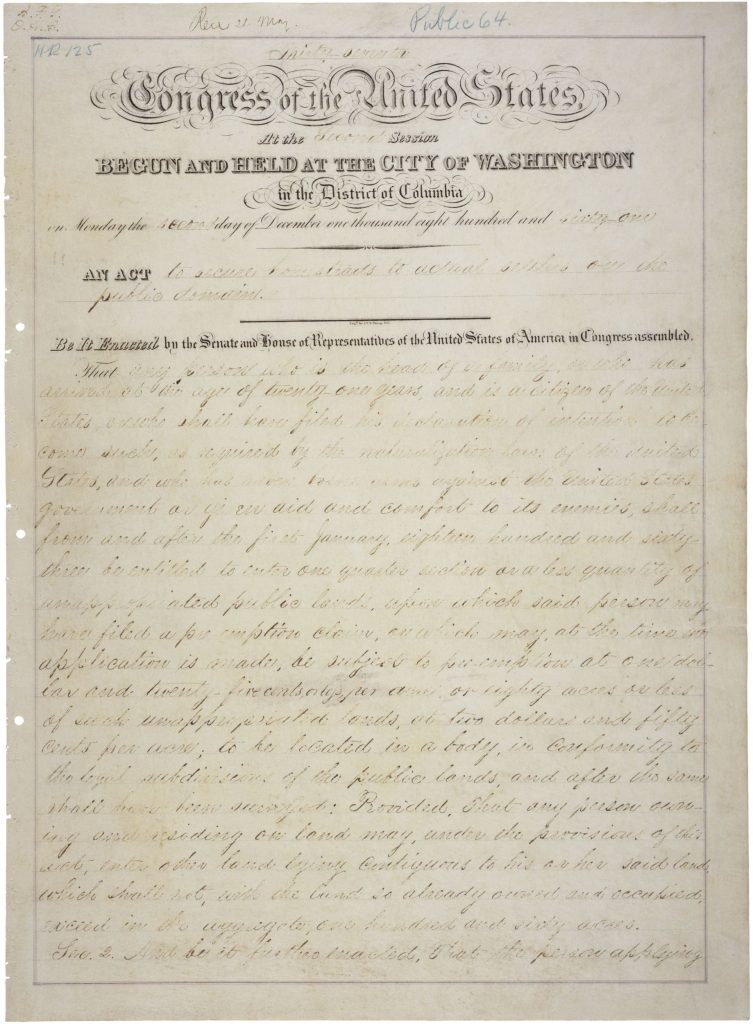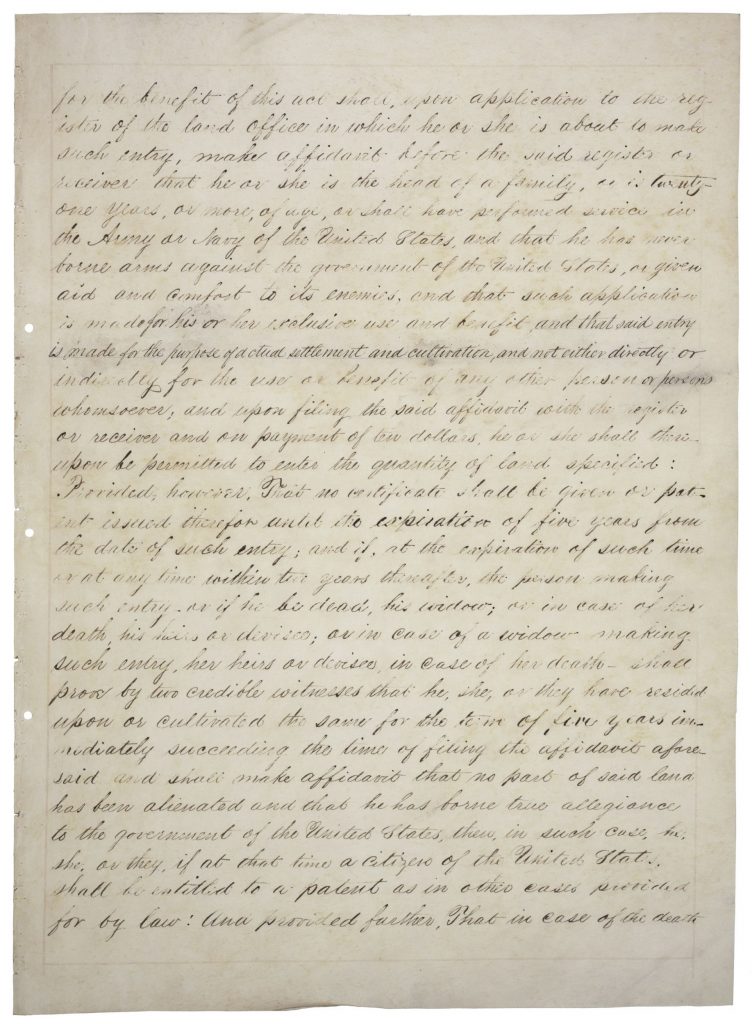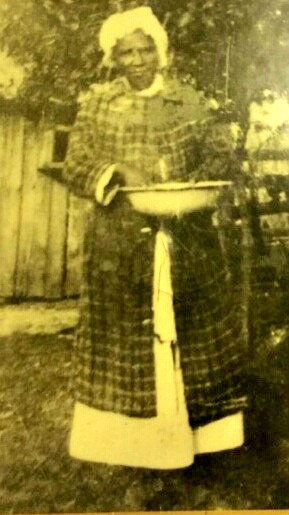Gordon Chapel is named after the church established at the center of its settlement. It is currently a 144-year old community after its naming, and about 153 years old based on its earliest documented homesteads. Cynthia Gordon (b.1835) sold and donated land for the church building after obtaining an 80.08 acre homestead. The community also contained a school. To this day, the church is active and the Gordon Chapel Cemetery is maintained.
The earliest known Gordons in Hawthorne, Florida, were Andrew Gordon, Sr. (c. 1799/1803 – c. 1881) and his wife Charity, Cato Gordon (c. 1802), William Gordon (c. 1804), Cynthia Gordon (c. 1805), James Gordon (c. 1810), and Frank Gordon (c. 1814). Andrew, in particular, was granted land for a homestead from the United States of America due to President Abraham Lincoln’s Homestead Act signed May 20, 1862 “to secure homesteads to actual settlers on the public domain.” The Act “gave citizens or future citizens up to 160 acres of public land provided they live on it, improve it, and pay a small registration fee. The government granted more than 270 million acres of land while the law was in effect.” Citizens must also have not previously borne arms against the Unites States government. Andrew and three of his children Tillman, Cynthia, and Unity/Unetta received land grants during Ulysses S. Grant’s Administration in 1875.
The Civil War
At the center of this research is Andrew Tillman Gordon, II (1827 – 1902), the second-eldest of Andrew, Sr. and Charity’s 14 children. He was born June 1827 in or near Winnsboro, Fairfield County, South Carolina. He typically went by the name Tillman, although he is sometimes in records as Andy/Andrew T. Gordon. Tillman or Tillman II is what he will be referred to as here. He and his brothers Livingston Gordon (1844 – 1887) and Cato Fleming Gordon (b. 1841) signed up for the military together and served alongside one another in the U.S. Civil War. Tillman & Livingston enlisted on February 25, 1864 at Fernandina Beach, Florida, and was in the 34th United States Colored Troops (USCT) Infantry as Privates, serving under Captain Oliver E. Bryant in Company D. Tillman was 34 years old and Livingston 25 years old. Cato enlisted at age 25 on March 25, 1864 in Jacksonville and placed into Company A under Captain James M. Carver. Their terms were for three years. Tillman served one year, mustering out April 22, 1865. All three brothers are named among other USCTs on a plaque (theirs being B-50) in Washington, DC, at the African American Civil War Memorial. Injury is noted on the plaque to the right of a name with a star. They all left injured. Cato & Livingston mustered out February 28, 1866. Tillman and his family were brought to Hawthorne area some time in or before 1860, based on reported birth locations. Not long after, he and Livingston make their way to Fernandina Beach, Nassau County, Florida, and Cato to Jacksonville, St. Johns County, Florida, to muster in to the USCT.
Aside from battle itself, injury was common for soldiers just out of hard labor as enslaved persons. Injury was particularly evident in Tillman’s military records on his health.



Through the graininess of the above image, you will see that Cato went by the name Cato Fleming. Pension records state that Fleming was Cato Gordon’s alias. It was common for former enslaved persons to change their names after slavery, often signing up under their master’s name and later changing it to their father’s last name (if different). Cato’s enlistment file states that his occupation was a “servant,” so it is possible that at enlistment he used the last name of his owner. Cato was married to Lucinda Anderson (b. 1855) June 10, 1880 in Jacksonville, Duval County, Florida.
Family
Tillman had three marriages. The first marriage was with Fannie (c. 1830–c. 1848) in South Carolina around age 20 in 1847. They had a child named Charlotte Gordon (c. 1848–1926). Based on the approximate year of Charlotte’s birth and Tillman’s marriage to Eliza about a year after, it is possible that Fannie died in childbirth; this would have occurred in South Carolina where Charlotte was born. Charlotte was discovered by her death record while researching info on Tillman. She and her family lived next to Tillman in 1880
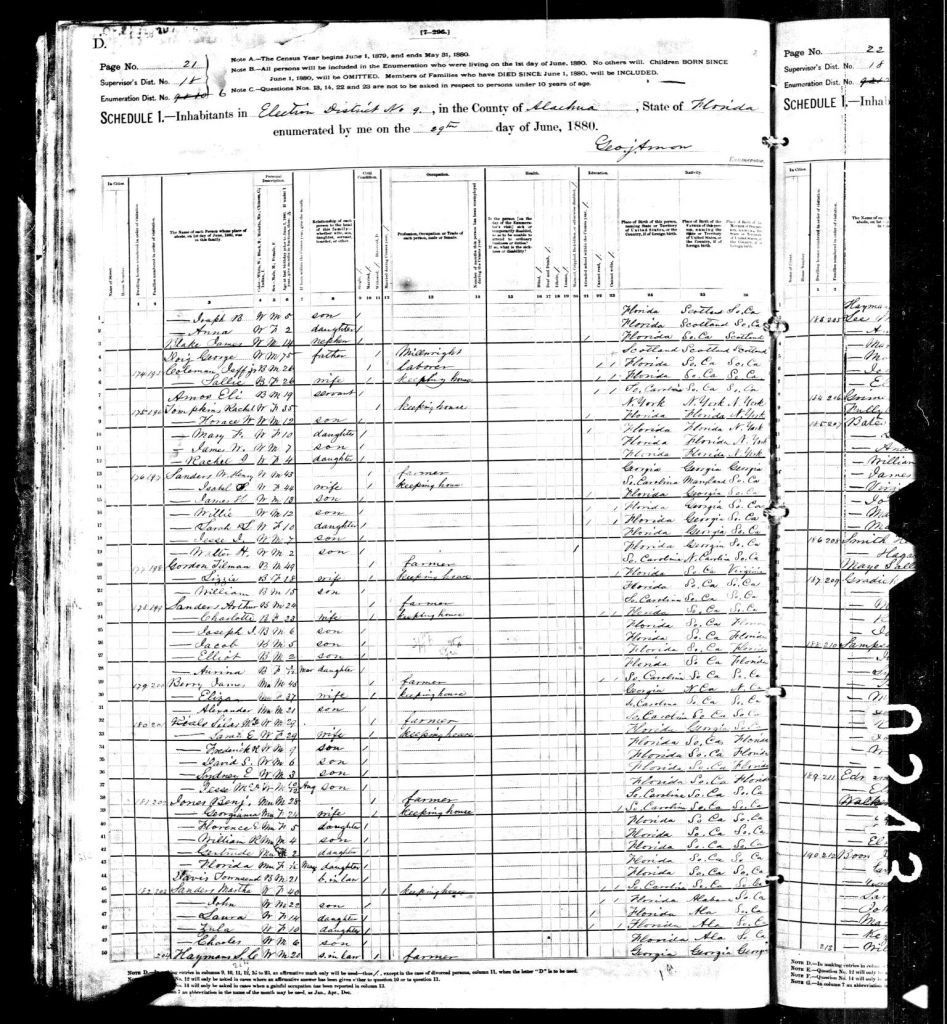
Tillman married Eliza (1832–1876) in about 1849 at the age of 22. He had six kids with Eliza—four boys and two girls. No certificate is found because marriages were not yet recorded for blacks.
The 1870 census shows that Eliza was born in South Carolina as well. After Eliza’s death, Tillman married Elizabeth McClennan (1862–1929) on March 18, 1880 at age 52. She was the daughter of Edward McClennan (c.1840-c.1862) and Clarissa Wilson (1845–c.1910). Elizabeth and Tillman had five kids—four boys and one girl. From both of these marriages, Tillman had a son in his namesake. Elizabeth’s father Edward passed before or just after she was born. She knew his name and relayed this in her Civil War Declaration for Widow’s Pension and that she was raised by (her mother and) stepfather Troy Simpkins (1823–c.1884). According to Elizabeth McClennan Gordon’s Civil War widow’s pension file, second wife Eliza is said by a witness to have been buried at a CME church near Hawthorne, or what is literally meant to be a colored ME church—the witness actually meaning AME. No image of her headstone has been found as of yet. A portion of the witness’ testimony is included here from the file attesting to his knowledge of Eliza and where she was buried:
Transcribed (with corrected spelling):
“I was personally acquainted with Eliza Gordon, who was the first wife of Tillman Gordon, deceased. I have forgotten the exact date of her death, but it was in March 1876. I assisted in digging her grave, and was present when she was buried. She died at her husband’s home, which is situated about three miles south of the town of Hawthorne, Fla. and was buried at the colored ME Church near Hawthorne, Fla.”
Signed in presence of, William (X his mark) Redick
P.A. Varnes
T.N. Strange
Fannie is unknown to the above witness William Red(d)ick, as he refers to Eliza as Tillman’s first wife. Based on most census records, in particular, it is reported that most of Eliza’s children were born in South Carolina. What this means is Eliza and Tillman came to Hawthorne together with their family—at least most of the community only having knowledge of Eliza as his first wife. Military files, especially U.S. Civil War files, contain such detailed information in order to determine who the actual/current spouses and rightful beneficiaries were. This is due to the fact that marriage among blacks during slavery were a challenge to prove without witness testimony like the above, as they were not yet legally recognized until after the Civil War.
Elizabeth’s file contains a wealth of information, including her reference to Fannie.
Transcribed as follows:
“…I do not know where she was from, nor any of her people. I do not know when they were married. They married since the war, I heard my husband say that often. I have known my husband since I could remember anybody. He was brought out here before the war from S.C.”
Elizabeth Gordon
Farming & Land Ownership
Tillman’s occupation was farming, and he and Eliza (and later with Elizabeth) did well for themselves by buying and selling property and agricultural goods. In Oct 1875, he even bartered 1200 lbs of Sea Island cotton to purchase 40 acres of land; this and all other land documents are provided in the Archives.
Remarkably, in 1868, just three years after he mustered out of the Civil War (and just think, a few years after slavery), his first property acquisition was a purchase of 40 acres from Rev. Solomon F. Halliday (aka S.F. Halliday) for $50. He purchased from him again, once in 1875 for 120.16 acres and an unknown amount of acreage in 1880. There were several other purchases and sales apart from Halliday.
Rev. S.F. Halliday was an Irish-descended (white) early settler of Gainesville, Florida, Presbyterian pastor & missionary, and was a real estate agent. His bio can be found on page 359 in Biographical Souvenir of the States of Georgia and Florida: Containing Biographical Messages of the Representative Public, and many Early Settled Families in These States; as of the date of its publication in 1889, he was noted to have been the oldest resident in Gainesville.

Tillman bought and sold from other white settlers in Alachua County (often on more than one deal), including John & May Holden, James Thomas, Joseph A. & Ann B.M. Shannon, Englishman George F. & Annie E. Bates, John W. Cunningham, McKeen & Anna Carleton, and Judge Louis Isadore Fleming of Hibernia, Florida / Fleming Island, Florida, of the family Cato Gordon (and perhaps others) may have previously been enslaved.
Again, Tillman was also granted homestead property in Hawthorne, Alachua County of 40 acres on July 1, 1875, as did his sisters Unity/Unetta and Cynthia, who received 160.16 and 80.08 acre homesteads respectively. Documents for these are in the Land Deeds archives.
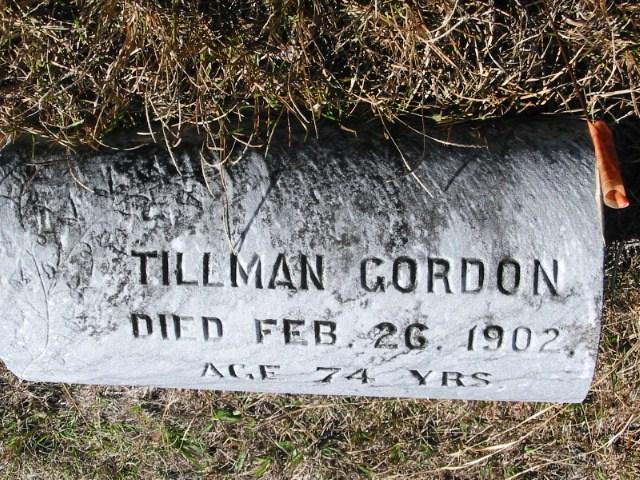
By the time of his death (after years of buying and selling hundreds of acres), Tillman left his family as a whole 100 – 160 acres and a horse worth $50, as noted from Elizabeth’s 1903 military widow’s pension file. Portions of Elizabeth’s pension file are in the Archives. The file contains witness testimonies, Elizabeth’s testimony, Tillman’s military & health information, and more. Elizabeth states in the file that there were 100 acres worth $200. However, 160 is what the last-recorded land transaction was (in 1882) when Tillman was still alive. Nevertheless, Elizabeth ended up adding to the acreage with a few land purchases years later. In addition, Tillman provided individual shares, hundreds of acres, in his estate for his adult offspring. Land was very important to families of all backgrounds; it kept them together, but also provided a means of wealth and self-sustainability.
In old age, it is said that Tillman had a long, white beard. According to his military file, he stood 5’5″ (Livingston at 5’7″ and Cato at 5’5″), and as of the date of his discharge, he was bent over at an angle of 45 degrees from getting hit by a falling tree. On February 26, 1902, Tillman died at the age of 74, and was buried in Gordon Chapel, Hawthorne (Putnam County), at Gordon Chapel Community Church Cemetery. Of the marked and readable graves, he is the second-oldest person buried there. Elizabeth is buried in Hawthorne Cemetery next to their daughter Rebecca Gordon and son-in-law Rev. Charles Augustus Middleton, Sr. (1849–1927).
